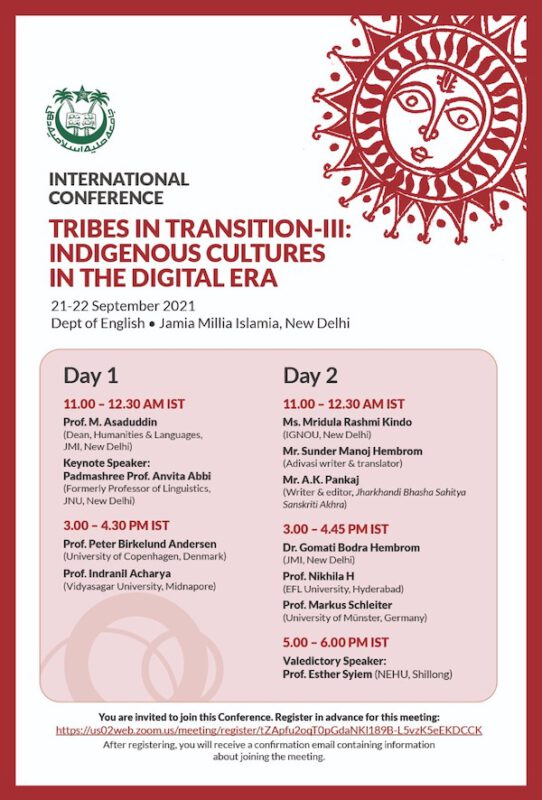Related posts: Sunder Manoj Hembrom | Video “Eyes came across”: The story behind the Santali song Be̠ṅge̠t́ Ńapam >>

Related posts & video >>
Courtesy Dr. Ivy Hansdak, Assistant Professor, Department of English, Jamia Millia Islamia University New Delhi (email 21 October 2021)
Ivy Imogene Hansdak on the state of Santal culture and Santali in modern India
Excerpts from a conversation between Dr. Ivy Imogene Hansdak: Poet, Translator and Assistant Professor Jamia Millia Islamia, New Delhi, India with Audun Nedrelid: Freelance Norwegian writer, artist, musician and filmmaker | Read the full interview >>
“I think the Santals have a very characteristic culture. Although we do not have our own script yet we have our own language that has been there for centuries. It is a complex language where you can be very expressive. We also have music and dance, and we have our own customs.”
Asked whether she is afraid that the Santali language will disappear:
“I don’t think so, but you never know. When you look at schools and universities in urban areas, children do not learn Santali. They are told that they must learn English and Hindi because these are the languages that will give them success in life. When I talk to friends about this, we usually agree that it is the poor villagers who will keep the Santali language alive. They are the ones who speak the language. It is not the script that keeps a language alive – it is the act of speaking. I am a person who knows several languages and use them all in different contexts, but for the villagers, Santali is the only language they can speak.”
On interest in folklore in Santal society:
“There is probably some interest, but now we live in a world of rapid development in the media. We cannot let our culture and society stop. Folklore was what we had, but we have also evolved. We live in a world where we all use mobile phones and Facebook. We are spread across much of India like Assam, Bengal, Jharkhand and Odisha as well as Bangladesh and Nepal. Everyone has different influences from where they live and change in different directions. The Santals in Assam are very different from, for example, me and the Santals in Odisha are struggling to use a new form of writing while others use the Latin alphabet. We are all also influenced by different politicians, and with political influence we go in many different directions.”
Source: “Santal and Professor: A Conversation with Dr. Ivy Imogene Hansdak” by Freelance Norwegian writer, artist, musician and filmmaker Audun Nedrelid (The Johar Journal, Vol. II, January-June 2021, first published in the Norwegian magazine, Agenda 3:16, 9/2018)